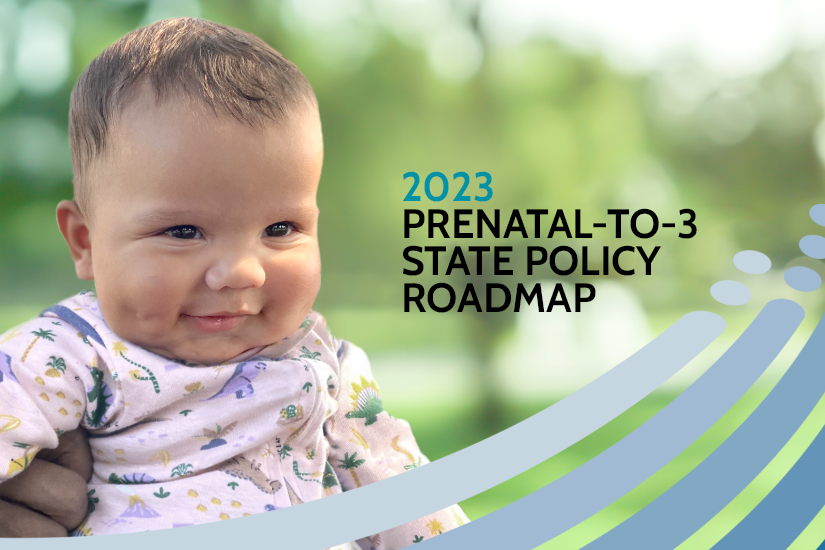In many states, a new year also signifies the start of a new legislative session. For lawmakers, January is a great time to introduce bills to enact evidence-based policies to improve child and family outcomes. Our Prenatal-to-3 State Policy Roadmap is your one-stop-shop to identify policies to meet your state’s specific goals.
In this blog post, we show how to use the Roadmap to align targeted outcomes with proven policies, assess policy progress in your state, and build your evidence-based toolkit to develop buy-in from critical stakeholders.
Align Desired Prenatal-to-3 Outcomes with Proven Policies
Our recent blog post explained how state leaders can compare their state’s performance with others across 20 measures of child and family wellbeing. After examining these data and identifying areas in need of improvement, the Roadmap can help state leaders set policy goals and craft an evidence-based policy agenda.
The Roadmap’s state-level outcomes page outlines how each measure aligns with one of our eight science-driven prenatal-to-3 policy goals, which would ensure infants and toddlers get off to a healthy start. Select one of the goal tiles to find effective policies.
- Health Insurance
- Adequate Prenatal Care
- Access to SNAP
- Developmental Screenings
- Parental Employment
- Child Poverty
- Crowded Housing
- Food Insecurity
- Preterm Births
- Infant Mortality
- Maternal Mental Health
- Parenting Support
- Daily Reading
- Daily Nurturing Behaviors
- Parenting Stress
- Child Care Providers Participating in QRIS
- Access to EHS
- Breastfeeding
- Immunizations
- Child Maltreatment
Say you are a policymaker in West Virginia, for example. On West Virginia’s outcomes page, you will find that West Virginia lags in parental employment outcomes, ranked 51st out of 50 states and the District of Columbia in percent of children under three without any fulltime working parent.

This measure is aligned with the policy goal of “Parents’ Ability to Work,” and the Roadmap offers several effective policy solutions that can improve relevant outcomes:
- a statewide paid family leave program of at least 6 weeks
- a refundable state earned income tax credit of at least 10% of the federal credit, and
- the three key policy levers for child care subsidies.
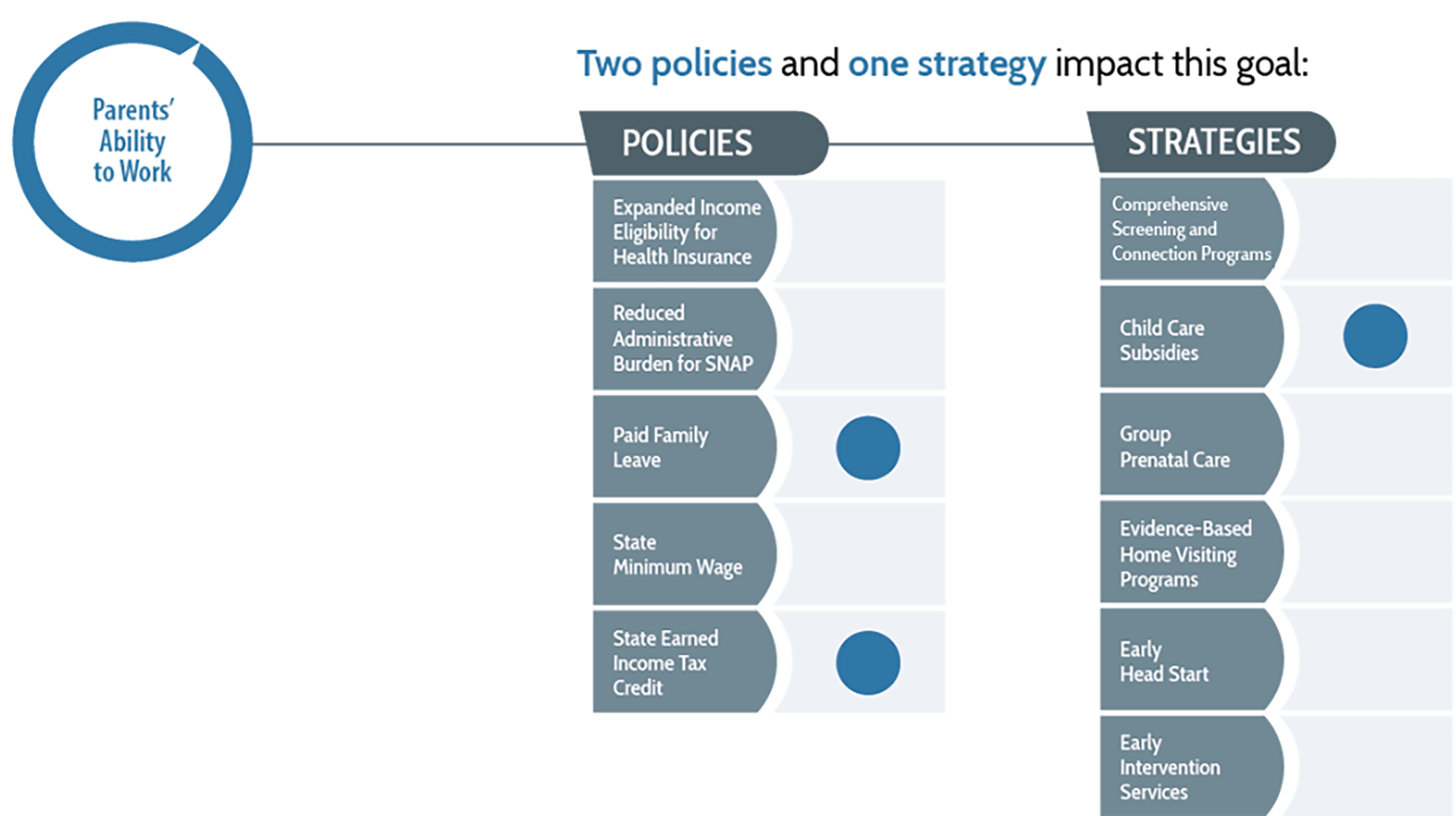
Although West Virginia does not currently have any of the above policy solutions in place, the Roadmap shows that in 2023’s legislative session, legislators introduced bills to adopt or strengthen all three of these policies. You can refer to West Virginia’s Roadmap summary to assess current policy statuses.
Paid Family Leave in WV
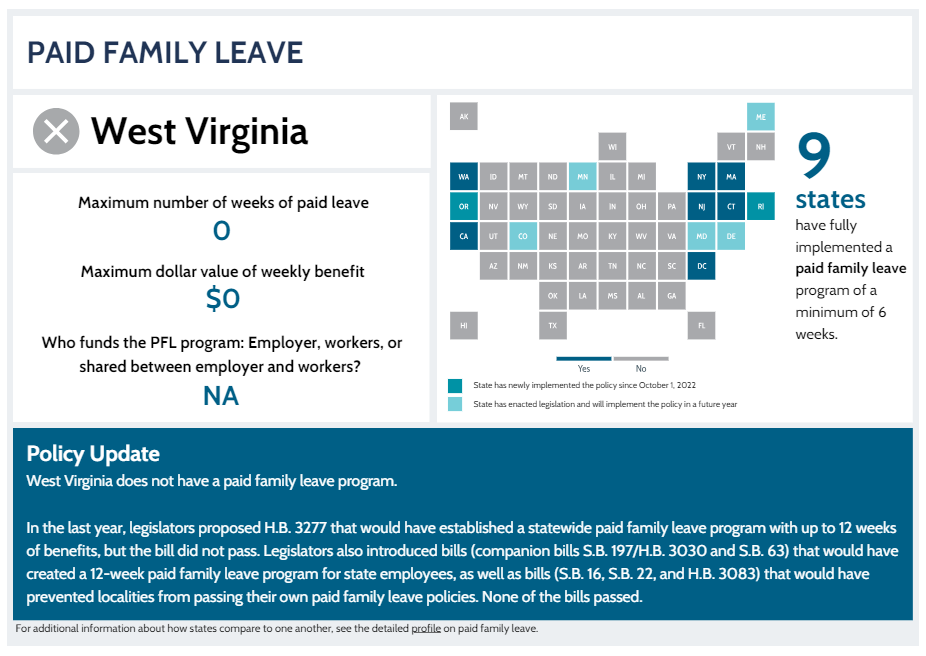
State Earned Income Tax Credit in WV
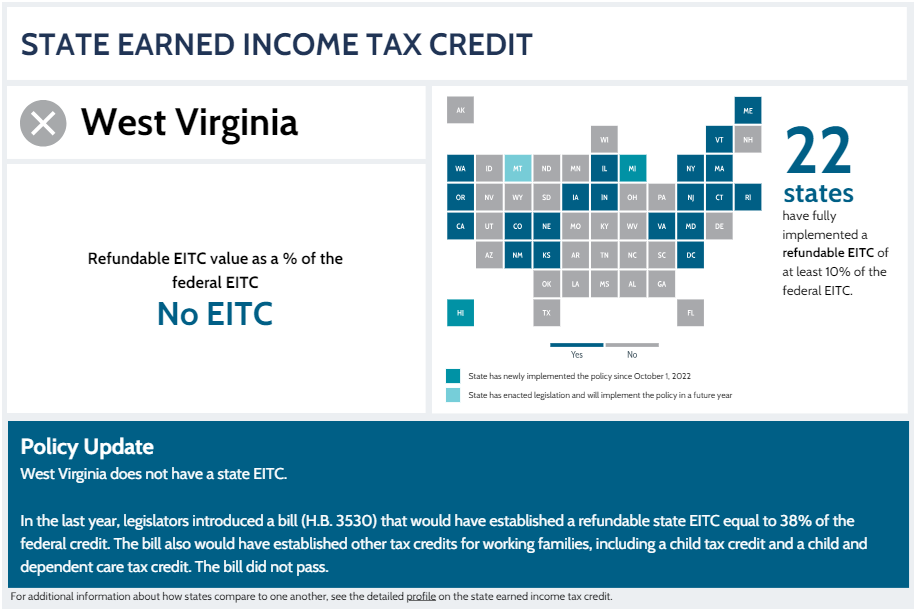
Child Care Subsidies in WV
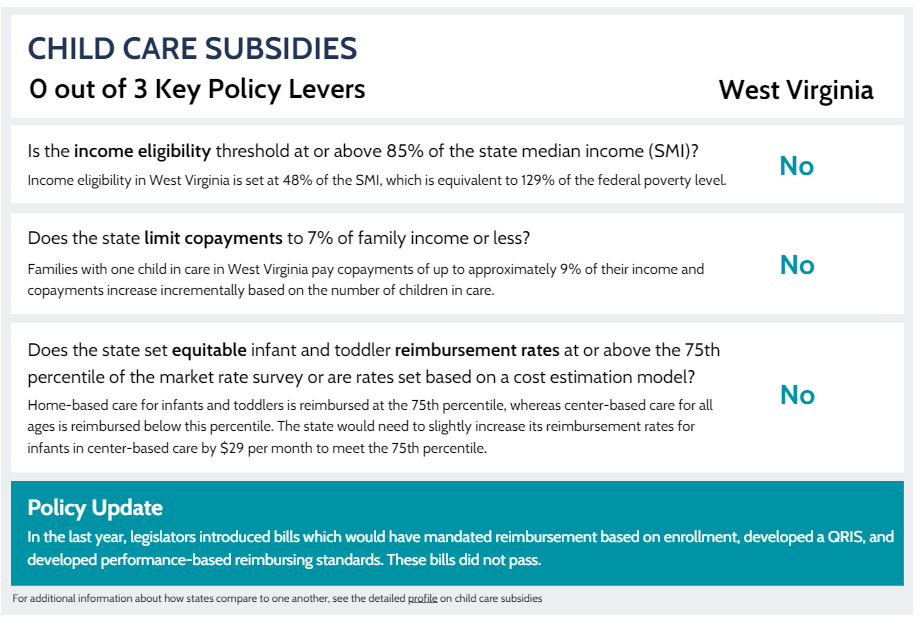
Build your Evidence-Based Toolkit to Garner Buy-in
To convince your colleagues in the legislature, the Roadmap also summarizes rigorous research findings on the impact of each policy on child and family outcomes. Use these data to build support for your bill. For example, the data below summarize the beneficial impact of paid family leave policies on maternal labor force participation, time worked by mothers, and employer attachment.
These high-level findings offer clear evidence of a solution’s effectiveness and explain how you can expect that solution to improve outcomes in your state.
Explore the Roadmap
Our 2023 State Policy Roadmap contains a wealth of evidence, legislative landscape analysis, and helpful comparison tools. Use the Roadmap to find effective solutions and gauge your progress toward meaningful goals. The Roadmap is your best resource to improve the lives of young children and families in your state.
